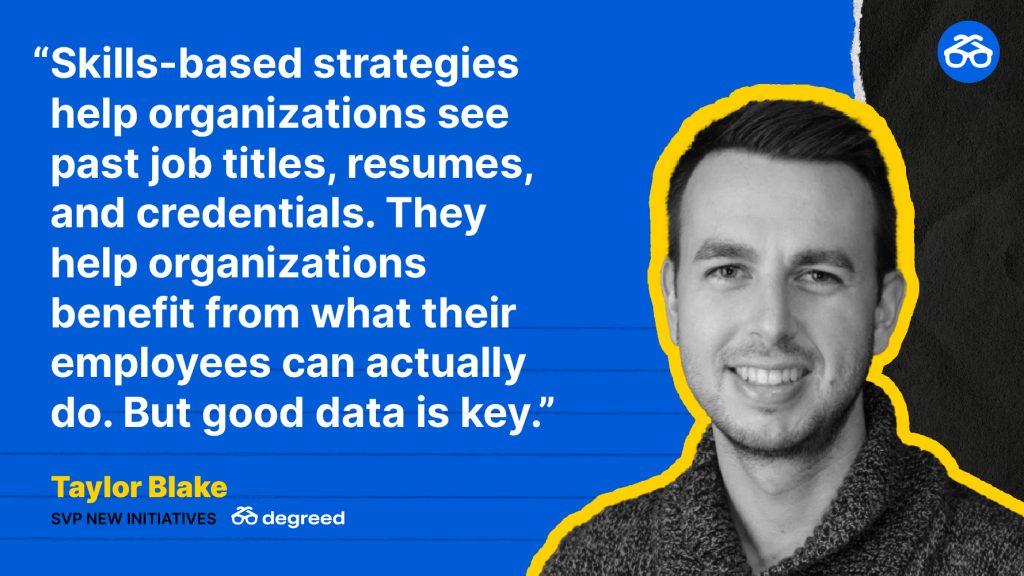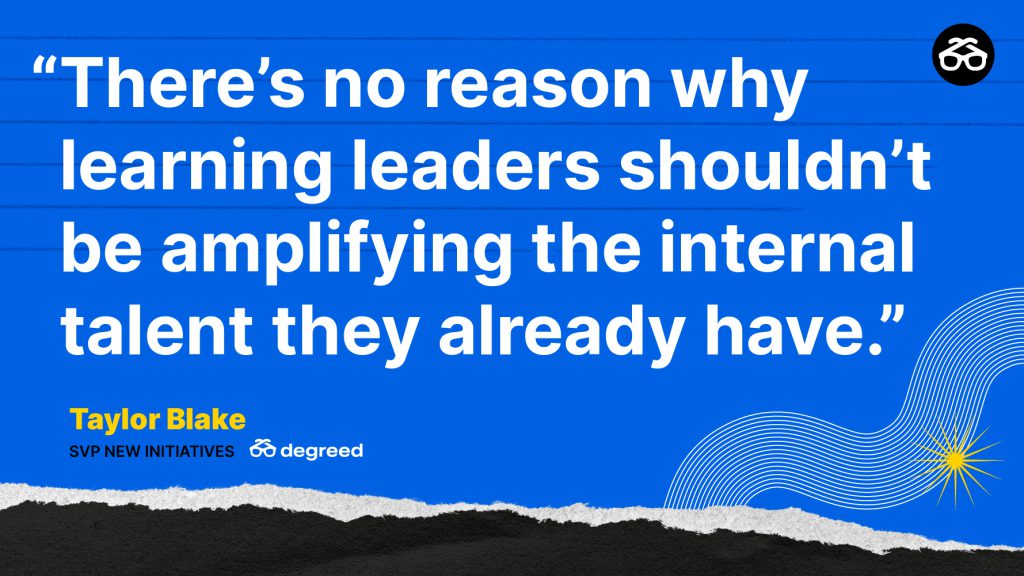Something interesting happens when you start working at a company. People start to see you as your job title. It becomes difficult for them to imagine you doing anything other than your current role. Your previous experiences and your wider skill set don’t factor much during the day to day, so those considerations quickly become a non-factor.
This problematic perception becomes one of the biggest reasons why company after company overlooks hidden skills that could be incredibly useful for enabling internal talent mobility. It’s also one of the reasons why so many business leaders are excited about skills-based talent practices. Skills-based strategies help organizations see past job titles, resumes, and credentials. They help organizations benefit from what their employees can actually do. But good data is key.
A skill-based approach can backfire if you don’t have good skill data. Incomplete data often contributes to the overlooking of quality internal talent. Why? They simply don’t have comprehensive skill profiles.

The Experiment: Strengthening Internal Talent Mobility Using AI
We hypothesized that AI can use inference to help fill skill data gaps and broaden a search for talent.
To set up our experiment, we created skill profiles (with 12 or more skills) for six employees: Taylor, a product manager (Hey, that’s me!); Adrian, a back-end developer; Jessica, a client success manager; Anne, a sales director; Quyen, a technical support specialist; and Stephen, a data analyst.
We then used AI to build a list of required skills for a new internal data analyst opportunity.
Today, most talent systems are looking for exact skill matches to recommend employees for new opportunities. This is what the talent pool looks like when an exact skill match for the data analyst position is performed.

Basically, Stephen (who is already a data analyst) looks to be the only person remotely qualified. This result is neither surprising nor insightful. And in today’s fast moving market, companies, managers, and employees need unexpected, innovative, and flexible solutions to fill skill gaps internally.
But, using AI, we asked the system to also highlight people who have adjacent skills. After all, just because someone doesn’t explicitly have a skill listed on a skill profile doesn’t mean that person doesn’t actually have that skill. And voila! This is what our talent pool looks like when adjacent skills (using AI inference) are considered.

Including adjacent skills creates an 89% increase in potential skill matches. We now see that Taylor (a product manager) and Jessica (client success manager) have adjacent skills that would help them qualify for this new position. Now we’re getting the more insightful and unexpected solutions that companies, managers, and employees need.
Let’s take it one step further. We know that skills aren’t static. Increasingly, we’ll all need to upskill to fill skill gaps. So let’s use AI inference to highlight stretch skills that someone could upskill into.

Look at all that color. Accounting for development opportunities provides an even richer talent pool, resulting in 179% more potential matches than our original analysis. Quyen (technical support specialist) was not initially on our radar for this role, but we can now see that she has a path to upskill herself.
AI inference isn’t the end-all-be-all, but it’s a good place to start.
Are there limits to this use case? Sure. Just because AI infers that someone may have a skill doesn’t make it true. But it does help broaden our search, and it doesn’t exclude potentially qualified candidates right from the get-go. And this information can lead to further analysis—through follow up conversations or skill assessments—providing hiring teams with a wealth of potential options for internal talent mobility before otherwise defaulting to an external search.
Turn the talent you have into the talent you need.
Considering how challenging it can be to hire good talent, or to develop it from scratch, there’s no reason why learning leaders shouldn’t be amplifying the internal talent they already have. And if there are still some gaps at your organization, Degreed can help to turn the talent you have into the talent you need.
Take a look at Verizon. When COVID lockdowns began, the wireless network operator, a Degreed client, temporarily closed nearly 70% of its retail stores essentially overnight. In doing so, Verizon looked at the skills of over 20,000 workers and redeployed them to serve other critical business needs. Through training, daily on-the-job coaching, and rapid reskilling, the company avoided layoffs and met the needs of customers faster and more efficiently.
Exness, a Degreed client and Cyprus-based fintech company, found similar success clarifying job roles by mapping skills to them, which in turn enabled the organization to embrace a focused, adaptive approach to employee development. Skill gaps are clearly identified, learning needs are proactively defined, and upskilling happens, contributing to measurable business outcomes like improved performance and innovation.

Find out more.
Thanks for following along with our experiments! You can check them all out, and be sure to watch for new experiments coming soon. (For example, would you like to see if AI can help estimate the time and cost for any employee to upskill to a certain level? Let’s find out!)

